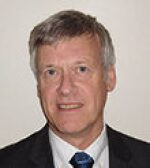
Steve Sawaryn, who made world-leading contributions to directional drilling and surveying fields, died 29 August. He was 66.
Sawaryn was an independent drilling engineering consultant specializing in drilling systems. He started his career at the British National Oil Corp. (BNOC), which later became Britoil, in 1979. He joined bp in 1988 when bp acquired Britoil and retired from the company in 2015 as a senior drilling advisor. Sawaryn held BA and MA degrees in chemical engineering and a PhD in petroleum engineering from Cambridge University.
A chartered engineer, chartered information technology professional, and fellow of the British Computer Society, Sawaryn was instrumental in putting together much of the directional drilling software used by BNOC, Britoil, and BP. In addition to implementing analytic solutions for wellbore heating and bottomhole assembly deflection problems, he developed a taxonomy for describing problems, such as setting up a drillstring simulation or specifying parameters for a well plan. It greatly improved the process by making it more efficient. Sawaryn was the Britoil (and later bp) lead for the Mobil Extended-Reach Drilling Joint Industry Project (JIP). “In the early days of his work on Beatrice, he laboriously recorded manually long series of drillstring torque drag readings to validate the models developed in the Mobil JIP,” said John Thorogood, who worked closely with Sawaryn in the directional drilling field. In 1989, he and Sawaryn published the famous Traveling Cylinder Plot, which revolutionized the calculation and presentation of well proximity, and is still in daily use around the world. During his 40 years of service in the industry, Sawaryn held a variety of positions in drilling operations, consultancy, technology, and projects in Aberdeen, London, Kuwait, Alaska, and Norway.
While Sawaryn served on several SPE drilling and digital energy committees, his contribution to the survey community was immense. He was an early and active member of the SPE Wellbore Positioning Technical Section (WPTS), which is also known as the Industry Steering Committee on Wellbore Survey Accuracy (ISCWSA). Sawaryn led a diverse group at ISCWSA to reach consensus on the need for practical solutions for well collision avoidance. As the chair of the WPTS Well Collision Avoidance Subcommittee, he led the efforts to standardize the rules and methods for collision avoidance that resulted in the two SPE papers that encapsulated the standard. “Steve Sawaryn will be greatly missed in ISCWSA where his contribution can hardly be overstated,” said Angus Jamieson, who worked with Sawaryn at ISCWSA and coauthored papers. “His ability to apply his mathematics with industrial strength practicality singled him out from many others of similar academic stature,” said Jamieson. As part of his WPTS role, Sawaryn also chaired the SPE Applied Technical Workshop on “Hits and Misses” in 2014.
Sawaryn was an SPE Distinguished Lecturer on the topic “Well Collision Avoidance, The Way Forward” during 2018–2019, member of the SPE Adaptive Well Construction Committee in 2013, and a co-chair of the 2004 SPE Smart Drilling Forum. He was the author of more than 40 SPE papers on drilling, completions, and drilling information technology, 22 of which were published in peer-reviewed journals.
For his contributions to the drilling discipline, Sawaryn was awarded the SPE Drilling Engineering Award in 2019. He received the SPE Aberdeen Section Service Award in 2010, SPE North Sea Region Drilling Engineering Award in 2011, and SPE Outstanding Technical Editor Award for Drilling and Completion in 2012 and 2017.
“His mathematical capabilities were outstanding,” said Thorogood, who cited how Sawaryn took more than 20 years to solve a directional drilling design problem, resulting in the paper A Generalised Solution to the Point-to-Target Problem Using the Minimum Curvature Method, which Sawaryn presented at the SPE/IADC International Drilling Conference and Exhibition in March. “He and I were at work on a paper looking at a statistical approach to kick-tolerance calculations for the SPE Drilling Conference in Galveston in March 2022. The paper will be completed in his memory,” said Thorogood.

